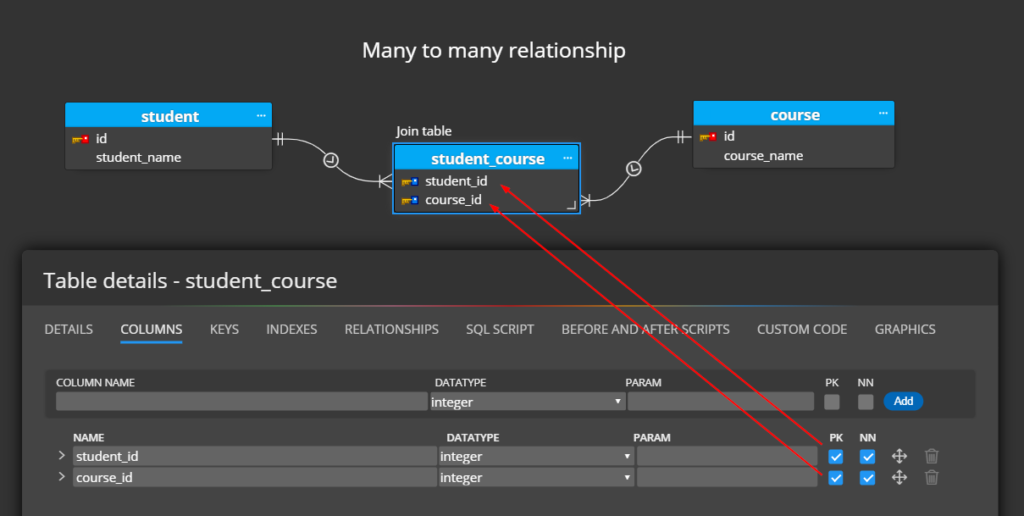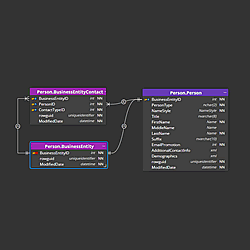Many-to-many relationship is a type of cardinality that refers to a relationship between two entities in an entity relational diagram (between two tables in a database). A simple example would be a relationship between the entities student and course. Each student can have multiple courses and each course is for multiple students.
Graphically, the many to many relationship is usually represented in a logical diagram with crow’s foot notation.

In a relational database, this relationship is then usually implemented using a join table, otherwise known as a junction or associative table with two one-to-many relationships. It is thus a model that can be represented as follows.

As can be seen, the join table contains foreign keys from both referenced tables.
(Read more about the differences between primary and foreign keys).
Many-to-many relationships in Luna Modeler
Since Luna Modeler is used to design data models as well as generate SQL scripts, the entity-relationship diagram is displayed as the objects in the database will be physically created. Therefore, it is usually necessary to create a join table in the diagram as well.
Procedure for creating the relationships
- Create three tables: student, course, and student_course.
- Then create two relationships. Click the Relationship button on the main toolbar and then click on the student table and then the student_course table. Use the same procedure to create a relationship between the course and student_course tables.

Now it is up to you whether you want to keep the primary key in the student_course table (which is inserted into the new table when you add it into the diagram) or remove the primary key and mark both columns of the foreign key as the primary key, creating the primary foreign key.

Display cardinality captions
Additional information can be added to the diagram in the form of cardinality captions, which are displayed above the relationship line. To display the captions, select Display cardinality captions from the Display menu.

Types of relationships in ER diagrams
- One-to-one relationships
- One-to-many relationships
- Many-to-many relationships
